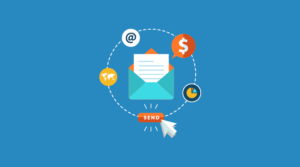Don’t Let Your Email List Die!

You’ve probably heard one or two people say, “the money is in your list.” List? What list?
If you have a blog but don’t have an email list, or if you have one that you don’t promote, then you’re totally missing a chance to gain a loyal following of people who will be interested, excited about and clamoring to read your insights and buy products and services you create or recommend.
Do I have your attention now?
It’s one thing to have a loyal blog following. But it’s entirely another when it comes to an email list. After all, anyone can get to your blog site, but to be on your list, the person has to give up a prime piece of real estate – their email address. It takes a certain amount of trust for many people to hand that over.
There are a number of programs you can use to collect your list. What you don’t want to do is manage your list manually. Not only is this a pain to do, but you lose the effectiveness and automation potential offered by many companies. I prefer Aweber because it’s easy to use, affordable and is reliable. But there’s also MailChimp, Constant Contact, AutoResponse Plus, Yahoo Groups, etc. A good search will give you even more ideas.
Whatever you use, choose wisely upfront. It’s projected that you can lose up to 90% of your list if you have to migrate your list to a new service. Given the work it takes to build a list, you don’t want to risk losing even one person simply because you didn’t think your initial decision through – or initially made your decision solely based on price. (Cheapest is not always the best.)
Make people aware that you’re Building a List
Once you’ve selected your system of choice, you’ll want to make people aware that you’re building a list. There are many ways you can entice, lure and otherwise cajole people into signing up for your email list. Here are a few ideas:
- Put a subscription form on every page of your website – this is by far the easiest thing you can do. While the upper right side is considered the primo spot for your subscription form, you can experiment to see just what placement works best. Keep in mind, though, that just because it’s there doesn’t necessarily mean people will subscribe.
- Create a compelling reason to subscribe – offer an ebook, assessment or something else that your blog/website visitors will just have to have. While something unique that you’ve created is optimum, there’s no rule that says you can’t offer something someone else has created (as long as you have permission to use it).
- Use social media to promote your newsletter – when you publish a newsletter, be sure to put it out into social media. Tweet about it, write a blurb on your Facebook profile and/or business page, let your LinkedIn connections know about it – just don’t keep it a secret! It’s definitely OK to ask your friends and family to join your newsletter list – just be sure to thank them when they do. In fact, be sure to thank everyone who joins.
- Only put unique content in your newsletter – this creates an aura of “mystique.” Really. If you’re saving your best stuff for your newsletter, people will want to see what’s “over there.” Don’t simply rehash a blog post, that’s not going to cut it. But you can water down a newsletter article for use on your blog, just as long as that’s done weeks after the newsletter was published.
- Guest post on other blogs and promote your newsletter – this probably doesn’t need any more explanation except be sure you’re doing this in places that reach your target audience.
- Participate in forums where your target audience hangs out – you don’t want to be all about your email list here, so there’s a fine line between extreme self-promotion and being a good forum participant. But if you’ve created relevant content in your newsletter that supports what the forum is about, then judiciously market your list and be a quality commenter.
- Create a squeeze page (separate signup) page on your website – you can use the link to this page in your email signature as well as direct people to it from forums, when commenting on other blogs, etc. You’ll want to explain why people should sign up for your list and, perhaps, give them some examples on this page.
- Ask people to share – so simple, but rarely done. Ask your subscribers to pass on the newsletter if they found it helpful. Nothing is better than a referral; people tend to trust what their friends send them to read.
By no means is this list exhausted! What other means can you think of that would help grow your email list?

 Why You Should Invest in Content Marketing More than Paid Advertising
Why You Should Invest in Content Marketing More than Paid Advertising Comparing GetResponse and Infusionsoft: What They Have to Offer for Marketing Your Blog
Comparing GetResponse and Infusionsoft: What They Have to Offer for Marketing Your Blog Build a Profitable Blog by Following Just One Simple Strategy
Build a Profitable Blog by Following Just One Simple Strategy The Big Money In Your Online Business Is Not Where You Think It Is
The Big Money In Your Online Business Is Not Where You Think It Is
{ 19 Responses }